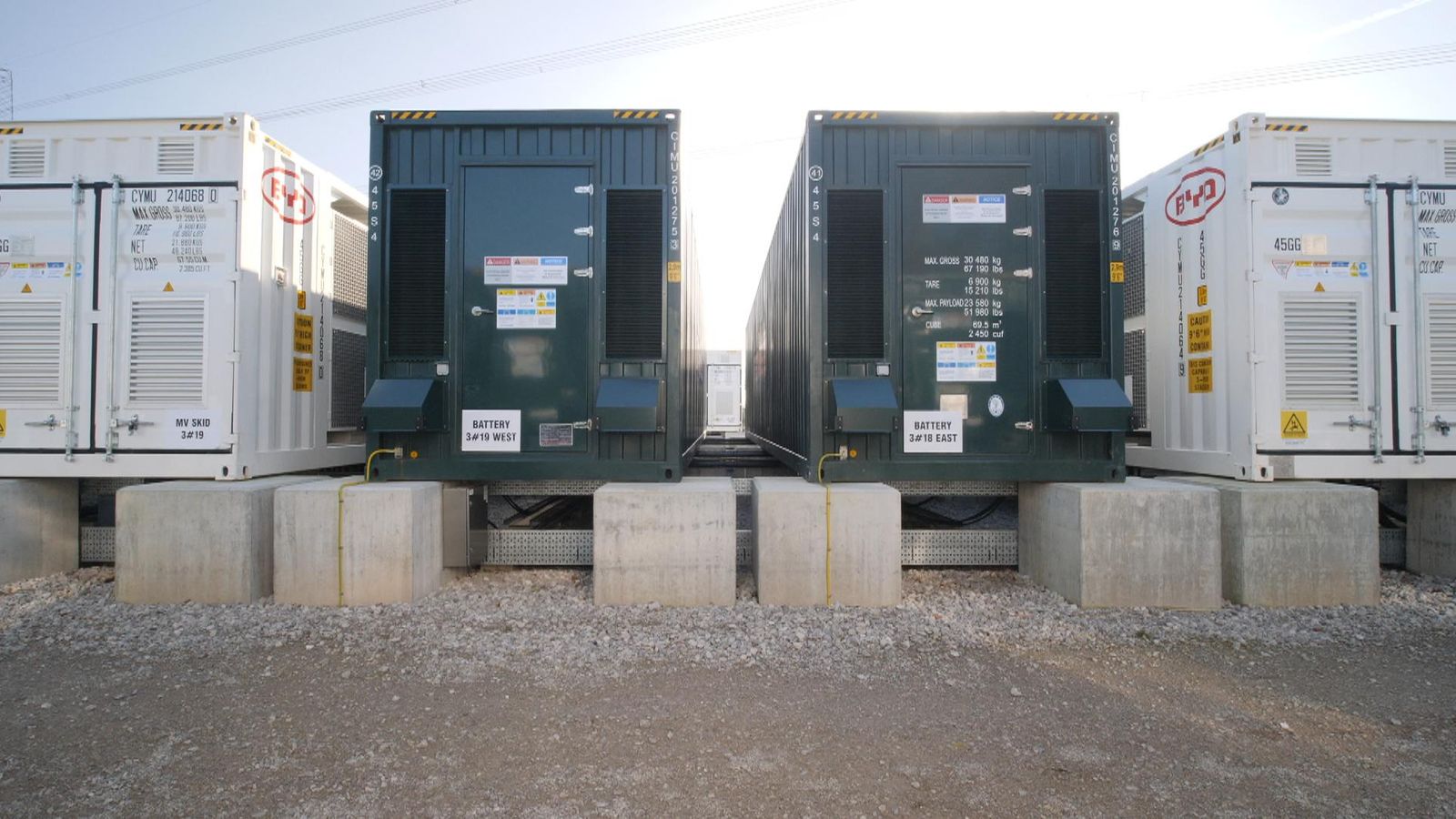It looks like a self-storage park: rows of shipping containers in a patch of Merseyside waste ground. But appearances can be deceptive as this is the first step in saving billions of pounds off bills and millions of tonnes of carbon. It’s a mega-battery.
Let’s take a step back. One of the great advantages of fossil fuels, and one we take largely for granted, is they are so easy to store. Piles of coal, drums of oil, tanks of gas. They just sit there waiting for a deliberate spark.
Renewables are different: you can’t hold the wind or bottle the sun. As the proportion of green power on our grid grows so does this inconvenient truth.
The variable and uncontrollable nature of solar and wind is not a new discovery, but it is only now that we are coming close to an affordable solution: massive banks of lithium-ion batteries similar to those in a laptop, phone and only affordable now thanks to their use in electric cars.
Sky News has been given exclusive access to Europe’s biggest grid-linked battery just after switch-on. It covers an area of around two football pitches in nearly one hundred containers and can store as much electricity as 1,500 electric cars, taking in the uneven power from wind turbines and smoothing it out for local homes and businesses. If you didn’t do this, lights would dim, or wires could melt. Most of that job today is done by either firing up mini generators – so called gas-peakers – to fill the power troughs or turning turbines off to prevent surges.
James Basden, CEO of the operator Zenobe, says their batteries will cut carbon emissions.
“Battery storage sites like this are enabling more wind power to come on, but also it’s shutting down the gas generators that are currently operating and as a result we save huge amounts of CO2.”
Climate crisis may have triggered collapse of ancient Hittite empire, study suggests
Climate crisis ‘sliding down agenda’, warns global energy watchdog
Greta Thunberg accuses Davos elite of putting ‘corporate greed’ above people and planet
But they should also cut bills too. When wind farms must turn off, they are paid to do this, paid to not generate. This is known as “curtailment” and the total cost is over half a billion pounds per year and rising as we have more renewables in the energy mix.
Zenobe and other big battery developers say if we can store it, we can use it and not pay to waste it.
“This is pushing power back onto the grid in a very consistent and predictable way… So sites like this are going to reduce the amount of curtailment. This site itself will save somewhere between 50 and £100m to consumers over the next 15 years.”
Batteries are one of many storage technologies in development. Scottish Company Gravitricity are using spare electricity to lift very heavy weights to the top of very deep shafts and then, when we need the wattage, they can be dropped to spin turbines.
HighView Power is using excess power to compress and refrigerate air, then store it in tanks for as long as required. When peak demand comes, the air is allowed to expand and, once again, drive generators. Hydrogen has a potential role in storage too: use electricity for the energy intensive process of breaking hydrogen out of water. Getting the H from the H2O gives you a tank of that zero-carbon fuel.
Dan McGrail, from the trade body Renewable UK, says: “We’re going through one of the biggest changes in our energy system of all time at the moment. So having energy, energy storage in the system is going to be a really vital component of how the system works in the future and stays in balance to provide electricity for homes and businesses.”
But none of these storage technologies is yet sufficiently mature to fill long winter spells of windless cloudy weather. To keep the lights on, some baseload of nuclear and reserve of gas power is likely to be needed for a few decades yet.








